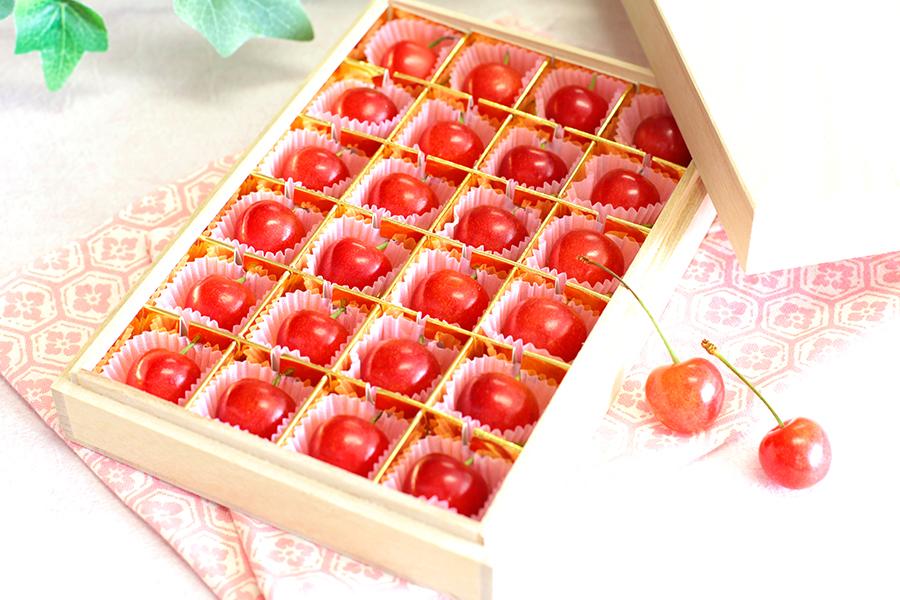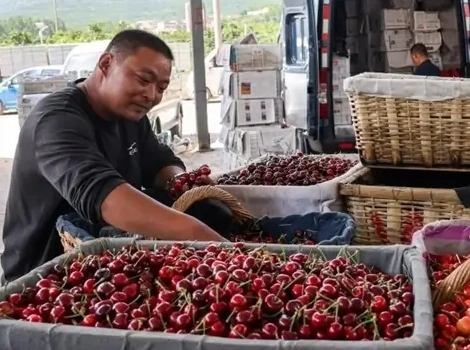Cherry production in Japan covers between 70 percent and 80 percent of domestic consumption; the remainder is imported mainly from the United States. This USDA report analyzes the main indicators of Japan's cherry economy between production, international trade, and domestic consumption: the latter is predominantly characterized by the local tradition of cherries mainly regarded as gifts and presents.
Crop area
In marketing year (April-March) 2022/23, Japan’s fresh sweet cherry cultivation area remained flat. There is negligible production of tart cherry in Japan. Aging farmers and a lack of successors continue to constrain Japanese agriculture, including the cherry industry, which exhibits continuous gradual decline in the domestic production area.
FAS/Tokyo estimates that the area harvested for cherries will shrink by 0.7 percent in MY 2023/24 compared to the previous MY. Yamagata prefecture, located about 250 miles north of Tokyo, represents 66 percent of Japan’s total cherry cultivation area. The following characteristics of Yamagata make it particularly suitable for cherry production: a large temperature difference between day and night, and little rainfall during Japan’s June to July rainy season.
| 2021/2022
(April 2021) | 2022/2023
(April 2022) | 2023/2024
(April 2023) |
|---|
| Area harvested (hectares) | 4260 | 4230 | 4200 |
| Commercial production (MT) | 11800 | 14500 | 15900 |
| Import (MT) | 6000 | 2363 | 4000 |
| Domestic consumption (MT) | 19100 | 18463 | 21600 |
Production
In MY 2022/23, Japan increased cherry production by 22.9 percent to 16,100 metric tons (MT) compared to the previous MY.
This production increase stems primarily from the recovery in Yamagata production, which represents 77 percent of the national production. Yamagata prefecture had a historically poor production in MY 2021/22 due to frost damage. Despite several frost events again in March and April of 2023 in Yamagata, farmers were able to minimize the frost damage and successfully saved a significant number of fruit sets.
Furthermore, Yamagata enjoyed favorable weather after the flowering in 2023. Post forecasts Japan’s total cherry production to increase by additional 9.3 percent to 17,600 MT.
Consumption
Despite increased domestic cherry production, Japan’s overall cherry consumption in MY 2022/23 decreased from the previous MY by 3.3 percent to 18,463 MT due to lower imports. For MY 2023/24 Post estimates Japan’s cherry consumption will increase by 17 percent to 21,600 MT because Japan’s domestic cherry production and cherry imports are both expected to increase compared to the previous MY.
In Japan, cherries are mostly consumed fresh and less than 10 percent are used for processing. Approximately 50 percent of domestically produced fresh cherries are sold directly for gifting purposes, followed by about 30 percent distribution via wholesale markets. Other distribution channels such as “Furusato Nozei” and local farmers markets make up the remaining 20 precent.
Furusato-Nozei (or “hometown tax” in Japanese) was initially introduced in 2007. Under this system, taxpayers can make donations to local municipalities and gain credits for income and residence tax in return. Local municipalities also send local produce to donors as “appreciation gifts.” To attract Furusato-Nozei donations to cherry-producing regions, premium fresh cherries are a common gift for donors.
 Ciliegie prodotte nella prefettura di Yamagata (Giappone)
Ciliegie prodotte nella prefettura di Yamagata (Giappone)
Trade
Japan imports over 90 percent of fresh cherries from the United States, thus U.S. production and unit price of cherries shape Japan’s import volume. In MY 2022/23, Japan's cherry imports decreased by 60 percent because of a drop in U.S. cherry exports. With the recovery of U.S. sweet cherry production, Post estimates Japan’s cherry imports will increase by 69.3 percent to 4,000 MT.
Japan’s fresh cherry exports were minimal (3 MT) in MY 2022/23 because soft textured Japanese cherries do not withstand international transportation well. Post estimates Japan’s cherry exports will remain negligible (less than 5 MT) in MY 2023/24.
Policy
The U.S.-Japan Trade Agreement (USJTA) came into force on January 1, 2020, and established a stepwise tariff reduction for U.S. sweet cherry exports to Japan (see here for more details). From April 1, 2023, Japan eliminated tariffs on U.S. sweet cherries. On April 13, 2023, Japan lifted the temporary phytosanitary measures for cherry import due to COVID19-related travel restrictions and conditions for U.S. market access for cherries returned to pre-pandemic requirements, which include an annual on-site audit of U.S. cherries.
Source: FAS - Stone Fruit Annual - Japan - Tokio (JA2023-0074)
Cherry Times - All rights reserved













